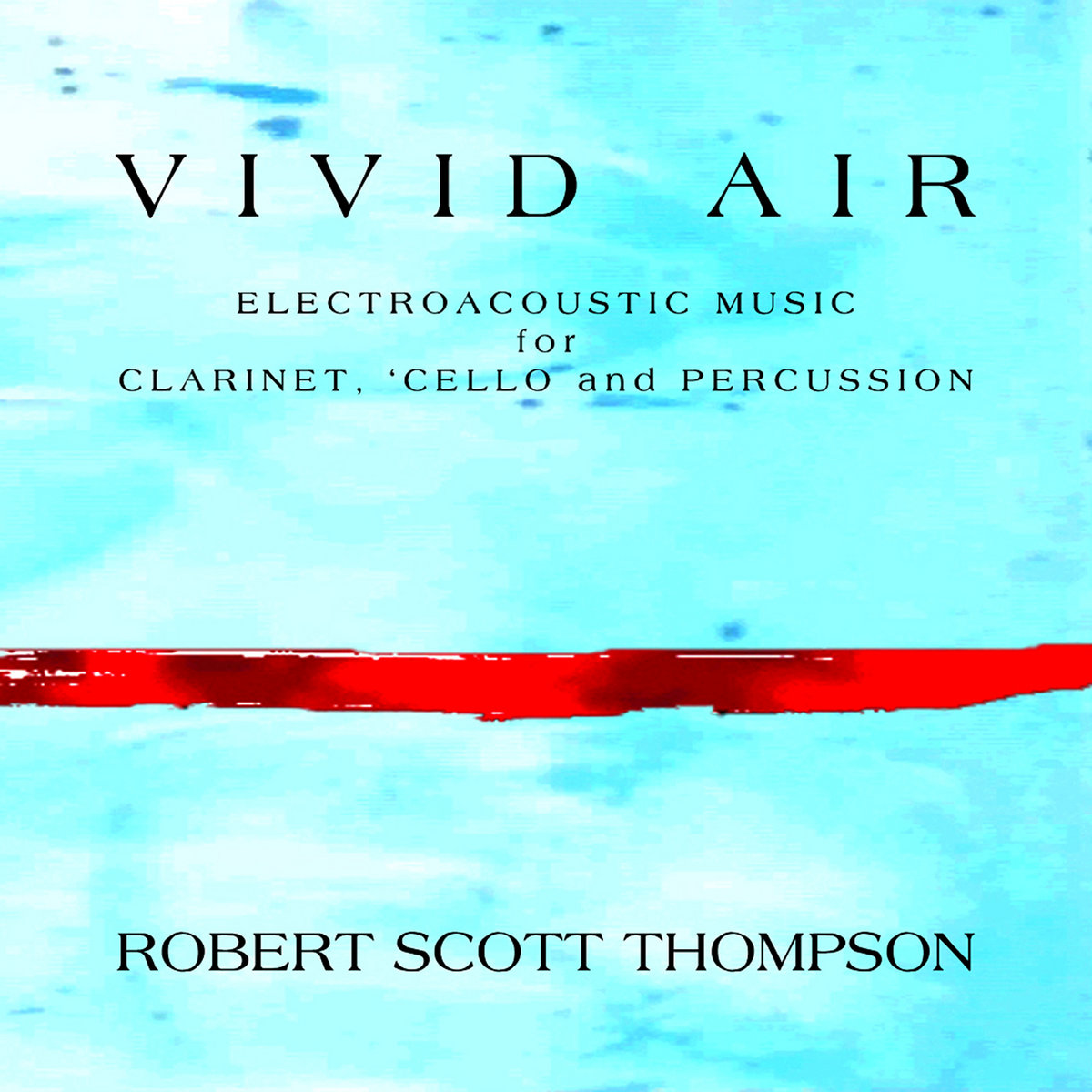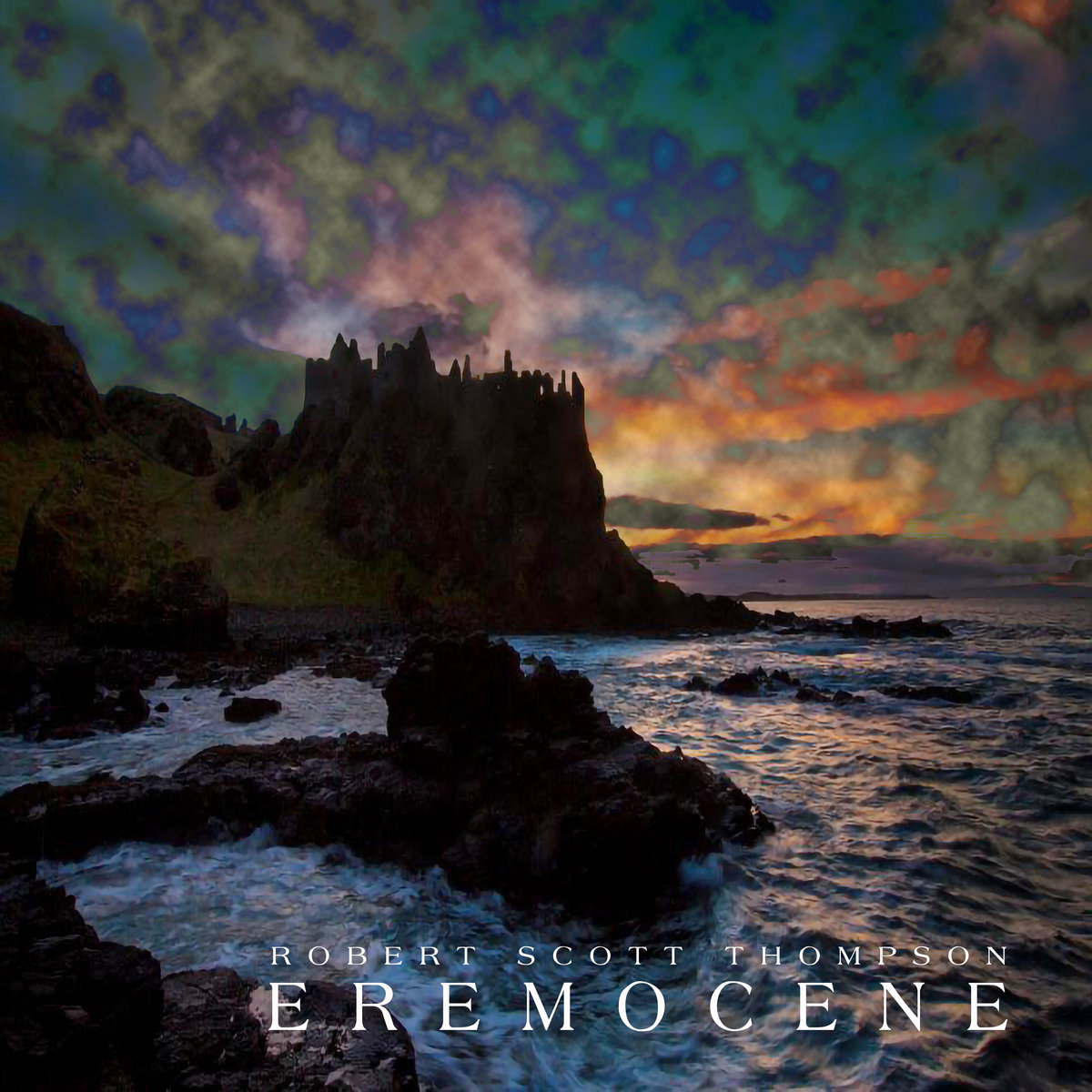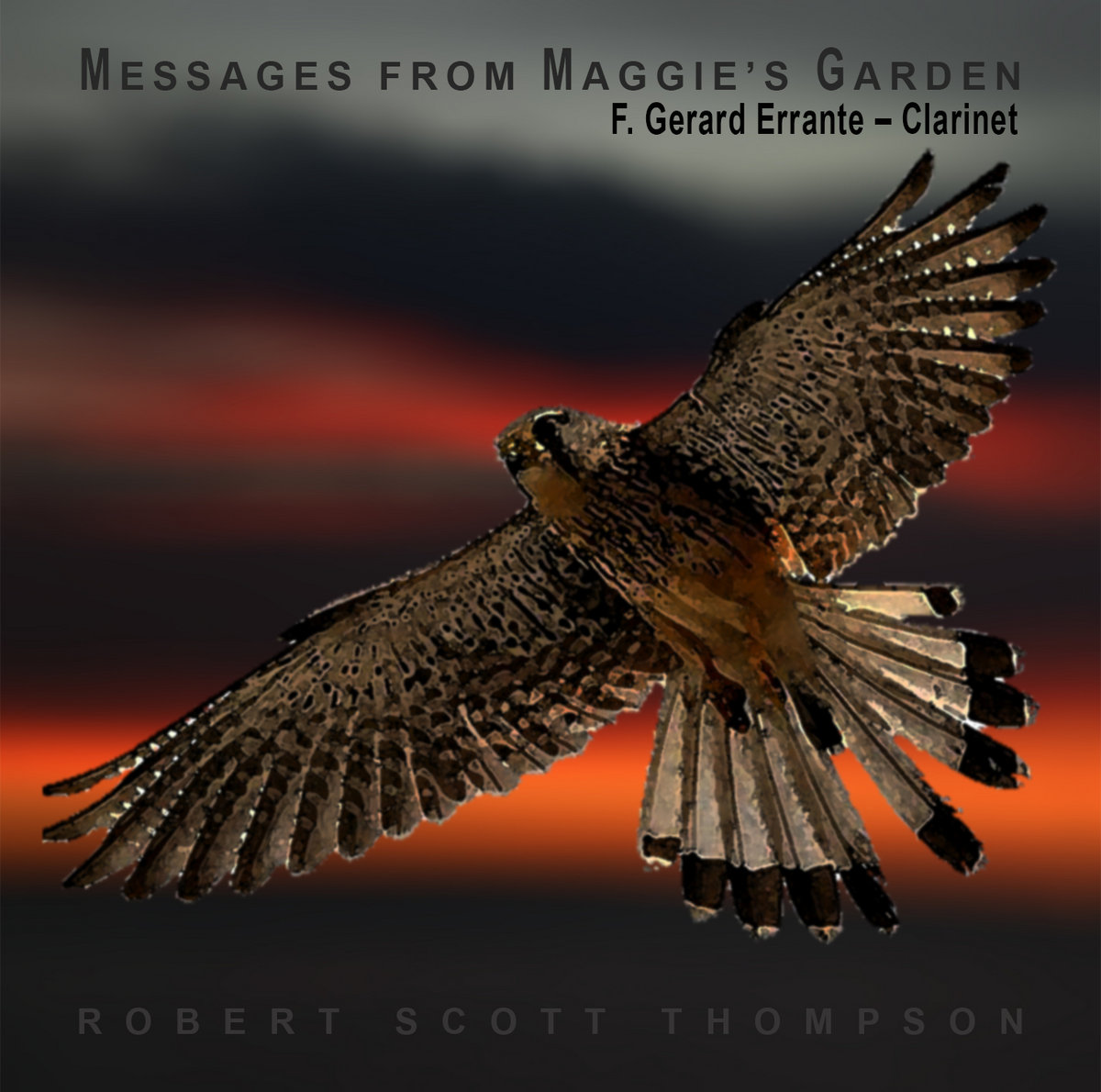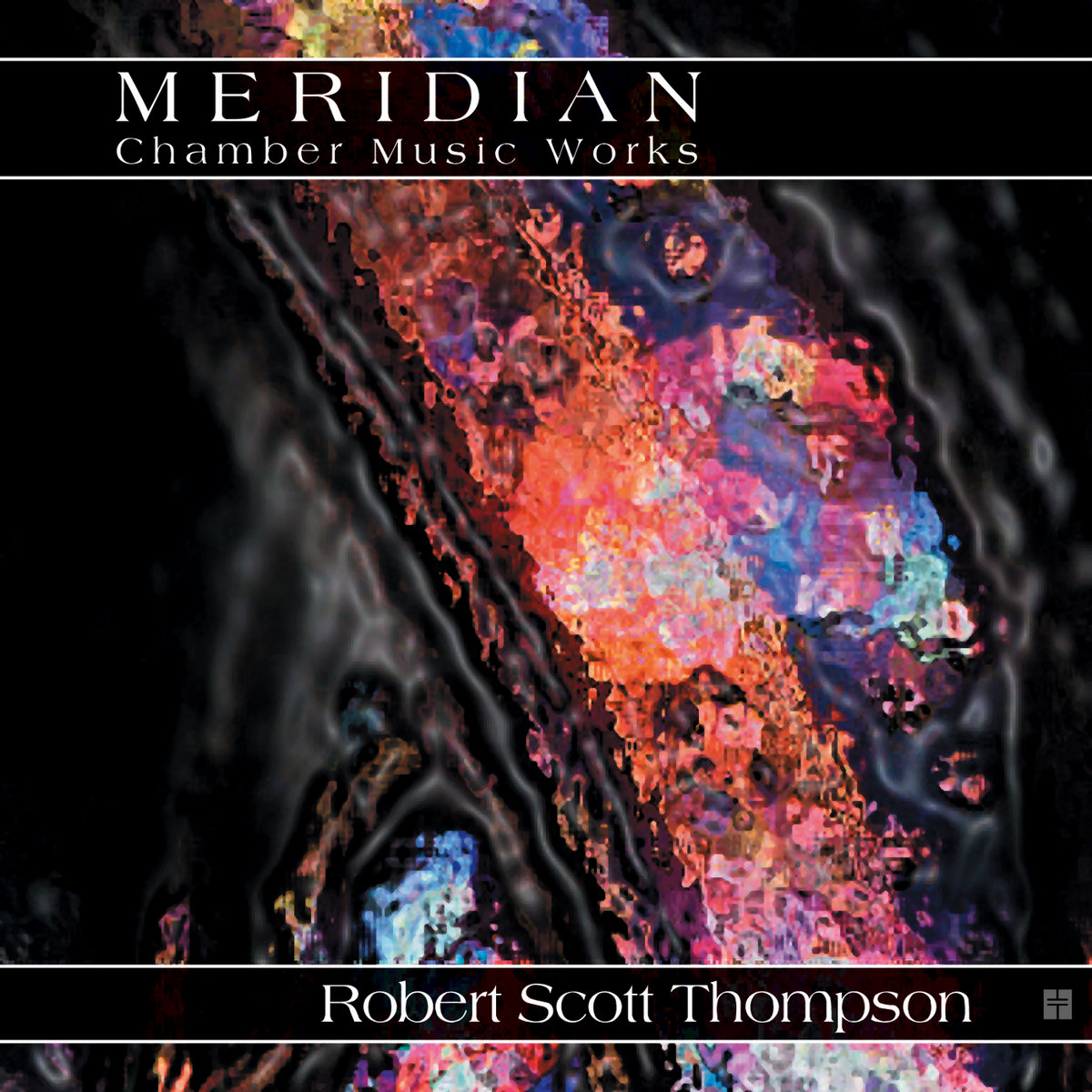Water Crossing — Alex Shapiro
I immediately loved Gerry’s idea of creating a CD comprised of music that was calming but not brain-dead, and was thrilled when he commissioned Water Crossing to be a part of the project. What fun, to compose music that could be a relaxing alternative to the usual tracks heard in doctor\’s offices and elevators. Open water has been a significant theme throughout my life, and as a sailor, kayaker and ardent tide pool explorer at the beaches on which I’ve been fortunate to live, I’ve spent a lot of time in or on the sea. One day Gerry told me of his canoe, tied up at the dock by his house on the Virginia coastline. The thought of it waiting there for him made me imagine a beautiful journey beginning in still, lake-like waters. During this mythical voyage, the canoe gradually morphs into a sailboat entering the open ocean, with dolphins dancing ahead of the bow. By the end of the piece we have returned safely to shore, invigorated and peaceful. If I could soothe someone awaiting a root canal with these aquatic visions from my own life, I’d be very pleased. – A. S.
Composer Alex Shapiro aligns note after note with the hope that a few of them might actually sound good next to each other. Her acoustic and electroacoustic works are performed and broadcast weekly across the U.S. and internationally, and can be found on over twenty commercially released recordings. Alex was educated at The Julliard School and Manhattan School of Music, where she was a composition student of Ursula Mamlok and John Corigliano. An enthusiastic leader in the new music community, she is a strong advocate for other artists through her frequent speaking appearances and her published articles. A former longtime Los Angeles resident, Alex was born and raised in Manhattan and now lives on acreage closely supervised by the deer and foxes of Washington state\’s San Juan Island. She procrastinates on her next piece by updating her website. www.alexshapiro.org, and her nature-inspired blog, www.notesfromthekelp.com.
___________________________
Echoes of the Invisible — Peter Terry
Echoes of the Invisible for clarinet and fixed media was written for F. Gerard Errante in Summer 2003. As I began this piece I had a flash of an image from Jean Cocteau\’s great film “Beauty and the Beast”, and this image has permeated and influenced this composition. Belle is running in slow motion down a long hall with window; shear curtains on either side blowing in the wind. She is searching for something or someone, but it isn’t clear what or who. Despite the fact that the curtains are moving freely in the wind, her dress and hair are unmoving as she glides, almost effortlessly down this long hall toward an unknown goal. I don’t understand why I have always found this scene so moving, but the dreamlike quality of everything in this image has always entranced me. Somehow it speaks to the nature of emotional memory, and the means by which we become haunted by unseen, but pervasive residue of lives and events in the spaces we inhabit. – P.T.
Peter Terry has been described by The Los Angeles Times as a composer with a “prodigious ability to write virtuosic melodic lines and ostinatos.” Peter is the recipient of numerous honors and awards, including an Ohio Arts Council Individual Artist Fellowship in composition, two Composition awards from the ASCAP Foundation and honors from the Austin Open Theater. Peter Terry’s music has been performed on prestigious festivals, concert series, and in alternative galleries and concert halls throughout the United States, Asia and Europe. His teachers include Christopher Rouse, William Kraft and Russell Pinkston, and he has served on the faculties of the University of Texas at Austin, Cal-State-LA, Bowling Green University and Bluffton University. He is recorded on the Cambria CD-1089, SIMPLE REQUESTS and has a solo CD of his electronic and acoustic works on Cambria CD-1103 “A HALO of DARK STARS”, performed by his ensemble, Electro-Metamorphosis. A video and multi-media artist, Dr. Terry is Associate Professor of IT and music at Bluffton University, Bluffton, Ohio.
___________________________
Passage — Robert Scott Thompson
Passage is the third work for clarinet and electroacoustics composed specifically at the invitation of Gerry Errante. Like the other two works, Canto de Las Sombras and The Widening Gyre, the live acoustic clarinet is deeply melded into the textures of the electroacoustic component, yet is clearly cast in the role of a solo voice presented with a minimum of signal processing in order to preserve the distinctive tone and character of the instrument.
The musical concept of Passage developed out of my engagement in composing ambient music (where sounds and musical structures exhibit a tenuous and fleeting anchoring in a shifting and amorphous tonal harmonic context), combined with my interest in sound processing and transformational elaboration in avant-garde electroacoustic music. My goal was to create a work that matched the intentionality of the Delicate Balance project – a composition that was on the cusp of avant-garde sensibilities (my over-arching approach to music) and more direct musical expressions emphasizing melodic materials within clearly drawn harmonic fields. To this end, the clarinet solo part is carefully blended into the texture of the work to emphasize and embellish passing harmonic implications throughout the sections of the composition.
Various acoustic sounds sources are used in the creation of the electroacoustic component – conspicuously absent are any sounds from the clarinet itself. The sources used include percussion instruments of various types, ranging from bamboo wind chimes to gongs and tam-tams, vocal sounds, environmental and “found” sounds, and sounds of more obvious instrumental origin. The song of the nightingale is featured prominently in the composition and especially in the final sections where signal processing lends the song an otherworldly metallic sheen. The work also features sounds of purely synthetic origin including simulations of thunder, wind, and rain.
Passage is dedicated to the memory of my mother, Margaret, a life-long patron of the arts and in later years a keen admirer of highly modernist music. – R.S.T.
Robert Scott Thompson is a composer of instrumental and electroacoustic music. He creates work in a wide variety of forms ranging from chamber and orchestral music to works for the virtuoso soloist, electroacoustic music, and video art. He is the recipient of several important prizes and distinctions for his music including the First Prize in Musica Nova (Czech Republic), First Prize in the Pierre Schaeffer Competition (Italy) and awards in the Concorso Internazionale “Luigi Russolo” (Italy), Irino Prize Foundation Competition for Chamber Music (Japan), and Concours International de Musique Electroacoustique de Bourges (France), among others.
In 1991 he was a Fulbright Fellow at the Danish Institute of Electoracoustic Music (DIEM) and was most recently composer in residence at the Institut de Musique Electroacoustique de Bourges (IMEB). He was named the Distinguished Honor’s Professor at Georgia State University in 1994, where he is currently Professor Emeritus of Music. His music is published on recordings by EMF Media, Neuma, Drimala, Capstone, Hypnos, Oasis/Mirage, Groove, Lens, Space for Music, Zero Music, Twelfth Root and Aucourant record labels, among others.
___________________________
Circles in the Sky — Jane Brockman
Circles in the Sky is the second movement of a three-movement work written for F. Gerard Errante in 2002, titled Circles in the Sun. Gerry Errante has performed and recorded several of my works, and I had a concrete idea of his marvelous sound in mind while composing. In Jorge Luis Borges’ short story, “The Circular Ruins”, a wizard paddles upstream to an overgrown abandoned ritual site in the forest, the sacred circle of the god of Fire. There through his dreams, after untold torment and numerous false starts over several years, he managed to produce a son. The first movement is a soundscape of this magical circular story, in which only Fire can distinguish between those who are dreamed and those who are real. Movements two and three continue the circular motif–bringing the magic into the sun. – J.B.
Jane Brockman’s concert music is informed by experience in dance, film, television, and academia. Raised in upstate New York, Brockman was the first woman to earn a Doctorate in Music Composition at the University of Michigan, Ann Arbor. Honors and fellowships include a Fulbright/Alliance Française fellowship, Rackham Prize for work in Vienna, 3 MacDowell Colony residencies, State of CT composers’ grants, Meet the Composer, Mario Davidovsky\’s Composers Conference, and the Sigvald Thompson Prize for orchestral composition. Brockman\’s mentors include Leslie Bassett and Ross Lee Finney, George Balch Wilson, Wallace Berry and Eugene Kurtz. She has been on the faculties of the Univ. of Connecticut, the Hartt School of Music/Univ. of Hartford, the Univ. of Rhode Island, and the Univ. of Michigan. After a Sundance Institute Film Composers\’ fellowship, she left her tenured professorship at the Univ. of CT to freelance in Los Angeles. Her music is widely recorded, and published by Arsis Press and Diaphanous Music, distributed by Theodore Front Musical Literature. She has served on Boards of Directors of New York\’s Composers Concordance, Women in Film, the Society of Composers and Lyricists, plus review panels for the National Endowment for the Arts. She produces a chamber music series titled Music & Conversations. www.janebrockman.org
___________________________
Breath — Joseph Harchanko
Breathing is the focal point of Vipassana meditation, training the mind to focus on one of the simplest and most routine aspects of our lives. Breath, for clarinet and computer, focuses on the beauty of simplicity and reflects the ebb and flow of mind and thought. The work was composed for F. Gerard Errante. – J.H.
Joseph Harchanko has written extensively for traditional instruments, large ensembles, and digital media. His music has been described as both “energetic and exhilarating” and “mystically alluring.” Harchanko is also an active cellist and electric cellist and is a founding member of the world music ensemble “Western Routes.” He lives in Salem, Oregon where many of his works are inspired by western landscapes. He has been awarded fellowships from ASCAP, the Aspen Music Festival, the Lilly Endowment, and UT. His works have been performed across North and South America, Europe, Asia, and Australia including performances at New York’s Carnegie Hall, London’s Colourscape installation, France’s Bourges and Videoformes festivals, and New Music Tasmania. He received his D.M.A. in composition at The University of Texas and holds masters degrees in cello and composition from The Florida State University.
___________________________
Equanimity — Robert Mackay
Taking a moonlit night on a beach in Majorca as its inspiration, Equanimity is an attempt to convey a sense of delicate balance between different environmental and sonic factors: a certain stillness in the air; the sound of different nocturnal creatures blending in harmony; the ocean shifting in the darkness.
I have tried to exploit the different elements that make up the sound of the clarinet, at the same time relating these to the natural sounds on the recording. A delicate balance is set-up between stillness and movement, knowing and unknowing. Is the listener hearing the sound of the clarinet or cicadas? Do they hear the performer’s breath or the sound of waves gently lapping against the shore?
Through the use of live electronic processing, the sound of the clarinet is subtly extended to aid this blending of instrument and nature. The through-composed nature of the piece reflects a gradual unveiling of the natural scene, shifting from the different harmonics contained in the clarinet to the sounds of insects and birds communicating on their own narrow bands of frequencies.
Equanimity was composed in Scarborough and Las Vegas (with support from the University of Hull and the great hospitality of D. Gause and Gerry Errante). – R.M.
Robert Mackay is a composer, sound artist and performer based in the UK. He obtained a degree in Geology and Music at the University of Keele, studying composition there with Mike Vaughan, before going on to complete a Master’s and PhD with Andrew Lewis at the University of Wales, Bangor. Currently he is a lecturer in Creative Music Technology at the University of Hull, Scarborough Campus.
Recent projects have moved towards a more cross-disciplinary approach, including theatre, text in performance, audio/visual installation work, and human/computer interaction. Prizes and honours include: IMEB Bourges (1997 and 2001); EAR99 from Hungarian Radio (1999); Confluencias (2003); La Muse en Circuit (2004 and 2006). His work has received over 100 performances in 16 countries (including several performances on BBC Radio 3). He has played, written and produced in a number of bands and ensembles, including the Welsh Hip-Hop collective \’Tystion\’ with whom he collaborated alongside John Cale on the film ‘A Beautiful Mistake’, as well as recording two John Peel sessions on BBC Radio 1 and supporting international acts, including PJ Harvey. He has also worked as an actor in various UK theatre productions. More information and pieces at: www.myspace.com/robflute and www.digital-music-archives.com. – RM
___________________________
Midway Inlet — McGregor Boyle
Midway Inlet is the historic name of the inlet that separates Pawleys Island, South Carolina from the next beach to the north. Pawleys is an island because of the tiny estuary known to locals as “the Creek,” which separates the island from the mainland. The Creek is about 1/2 mile wide at its widest point, and it is about 4 miles long from Midway Inlet to the smaller Yahanney Inlet to the south. The locals no longer use these names, instead calling them the “Pawleys north inlet” and “Pawleys south inlet.” The piece Midway Inlet uses sounds recorded at Pawleys to describe a boat journey through the Creek to the inlet and back.
Musically the piece is inspired by plainchant, specifically the hymn Veni Creator Spiritus, which is usually attributed to Rabanus Maurus (776-856). Most of the clarinet part is derived from this hymn, which is quoted explicitly at the piece’s climax. The computer part derives entirely from what the clarinet player plays, tracking its pitch and sustaining certain notes. The computer also contributes sounds from the creek, including that of water lapping, the distant ocean, and wildlife indigenous to the area. – M.B.
McGregor Boyle is active as a composer, performer, and music educator with a primary interest in digital media and computer applications to music composition and performance. With a Master\’s degree in guitar performance and a Doctorate in composition, Dr. Boyle is uniquely qualified to explore the applications of emerging digital technologies to the difficult problems posed by serious music composition, and its presentation to the audience in performance.
The recipient of many prizes and awards for his composition, Boyle is especially interested in collaborations with artists from other disciplines, from work with choreographers and visual artists to his more recent scores for outdoor laser and fireworks spectacles. He was the composer of the music for the pioneering multimedia performance piece Red Zone, which combined digital sound with computer-controlled visual images, modern dance, and spoken word to create a seamless integrated whole which was highly acclaimed by audiences and critics in 1987.
Dr. Boyle is on the Computer Music Faculty at the Peabody Conservatory of the Johns Hopkins University, where he teaches computer applications to music and chairs the Composition Department. He received the Johns Hopkins Alumni Association Excellence in Teaching Award in 2008.
___________________________
Cherry Blossom and a Wrapped Thing: After Hokusai — Judith Shatin
Cherry Blossom and a Wrapped Thing: After Hokusai (2004, rev 2006) was inspired by a print of the same name made by the extraordinary Japanese print-maker known as Hokusai (1760 – 1849). I encountered it in a sumptuous collection of his prints at the Otani Museum in Tokyo and was immediately struck by the subtle mystery of both its subject matter and execution. The subtle print showed a cherry blossom and a slight, opaque object next to it, wrapped in a sheer cover, twisted at the top. The cherry blossom speaks of the beauty and brevity of life; the wrapped thing of its ineffability. My composition, commissioned by clarinetist F. Gerard Errante for this CD, is heard here in the version for clarinet and stereo electronics; it is also available in eight-channel audio. The electronics start by wrapping around the performer and audience, floating above, and over the course of the piece they descend into the deep. The clarinet part has the gentle quality of cherry blossoms drifting in a gentle wind. – J.S.
Judith Shatin (www.judithshatincom) is a composer, sound artist, community arts partner and educator. She is William R. Kenan, Jr. Professor at the University of Virginia, where she founded and directs the Virginia Center for Computer Music. A recipient of four NEA Fellowships, Shatin has been honored with awards from the American Music Center, Meet the Composer, the New Jersey State Arts Council and the Virginia Commission for the Arts, among others. A retrospective of her music was sponsored by the Lila Wallace – Readers Digest Arts Partners Program, culminating with her folk oratorio, Coal, scored for chorus, Heritage instruments, synthesizer and electronics. Shatin’s music is performed worldwide and at festivals such as the Aspen, BAM Next Wave, Grand Teton, Havana in Springtime, and West Cork Festivals. Twice a fellow at the Rockefeller Center in Bellagio, Shatin has also held residencies at Bramshaus, La Cité des Arts, the MacDowell Colony, and many others. Her music is widely recorded, with CD’s devoted to her music on Innova (Dreamtigers) and Capstone (Piping the Earth) Called “highly inventive… on every level; hugely enjoyable and deeply involving (Washington Post), her music has been commissioned by groups such as the Library of Congress, the Kronos Quartet, the Dutch Hexagon Ensemble, and the National and Richmond Symphonies.
___________________________
A Little Night Music — Douglas Quin
A Little Night Music was inspired by the polyrhythmic pulses and thrumming of insects on a warn midsummer night in rural North Carolina. Field recordings were manipulated and treated to draw out pitched and contrasting timbral elements to provide a bed or counterpoint to clarinet and birdsong. F. Gerard Errante composed the clarinet portion of this work after the insect scoudscape was created. He also added a recording of the Kaua’i o’o, a Hawaiian bird that is most likely extinct. The clarinet portion of this work is based in large measure on its song. – D.Q & F.G.E
Douglas Quin is a sound designer, naturalist, public radio commentator, educator, and music composer. He has traveled widely documenting the natural soundscape—from Antarctic ice to Arctic tundra and from African savannah to Amazon rainforest. Quin teaches in the Television, Radio and Film Department at the S. I. Newhouse School of Public Communications at Syracuse University. He is the recipient of numerous awards and grants including the Ars Acustica International prize, Meet the Composer, multiple fellowships in music composition from the National Endowment for the Arts, an Individual Artist Fellowship from the Maryland State Arts Council, and support from the National Science Foundation.
___________________________
rain of the heart, reign of the soul — D. Gause
When a cataclysmic event occurs in nature, things are forever changed. A devastating forest fire can destroy countless acres of beautiful land, of animal habitat. But the same fire can be the catalyst for new growth as saplings emerge from the charred land and as seeds sprout, having undergone a scarification process after being dormant for decades. So goes the path of humans. Events can occur in our lives which burn us to the core of our very being, but bring with them the chance for change and renewal, the opportunity to witness and experience the rain of the heart; the reign of the soul. – D.G.
D. Gause, a native of the Washington, D.C. area, has been active as a musician for over three decades on the Las Vegas Strip as a conductor, pianist, synthesist, and clarinetist. Since its opening in 2006, she has been playing the principal clarinet book in the highly acclaimed revised version of Phantom of the Opera at The Venetian hotel. She has also played clarinet for such esteemed Broadway musicals as West Side Story and Evita. In addition, she has demonstrated her versatility by playing keyboards for the hit musicals We Will Rock You and Mamma Mia! D. Gause has earned four academic degrees and also has studied clarinet privately with distinguished teachers throughout the United States. A recipient of the coveted “Who\’s Who Among American Teachers” award, Dr. Gause is a Professor at the College of Southern Nevada, where she teaches clarinet and piano; additionally, she teaches other music courses online to students worldwide. Dr. Gause performs regularly as a soloist, chamber musician, and orchestral musician in addition to touring with the duo Clarion Synthesis. She is a multiyear recipient of grants from the Nevada Arts Council, as well as the National Endowment for the Arts. These grants partially fund CSN\’s International New Music Festival, of which she is the Founder and Director. D. Gause performs and composes both in the world of new music and the world of popular music and her compositions have been performed throughout the U.S., Canada, Europe, and Japan.







Reviews